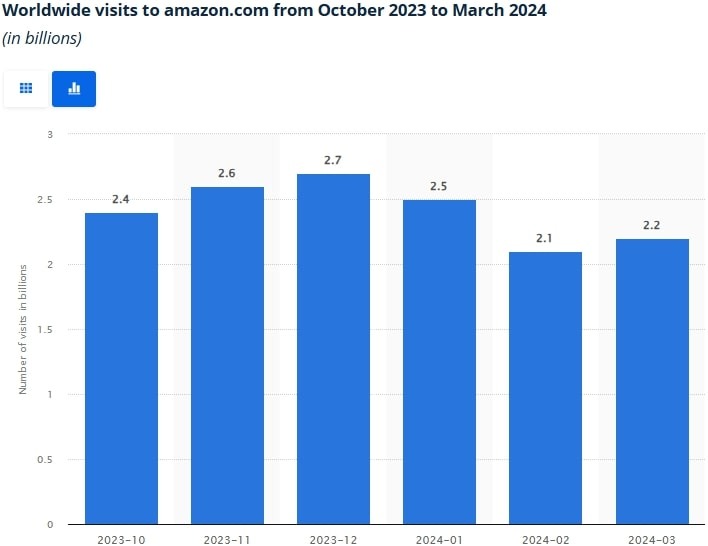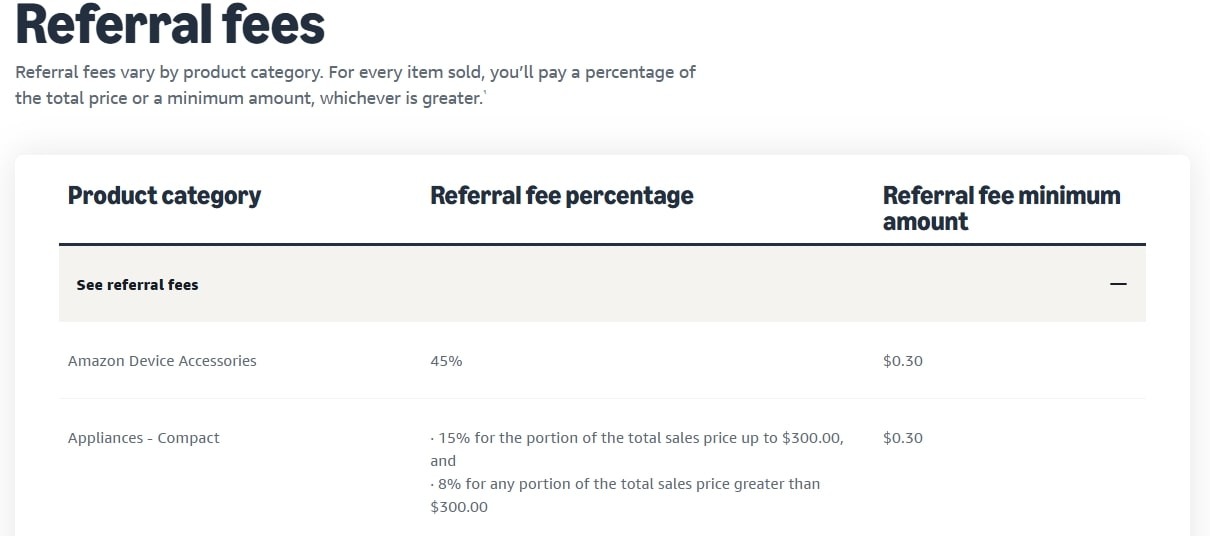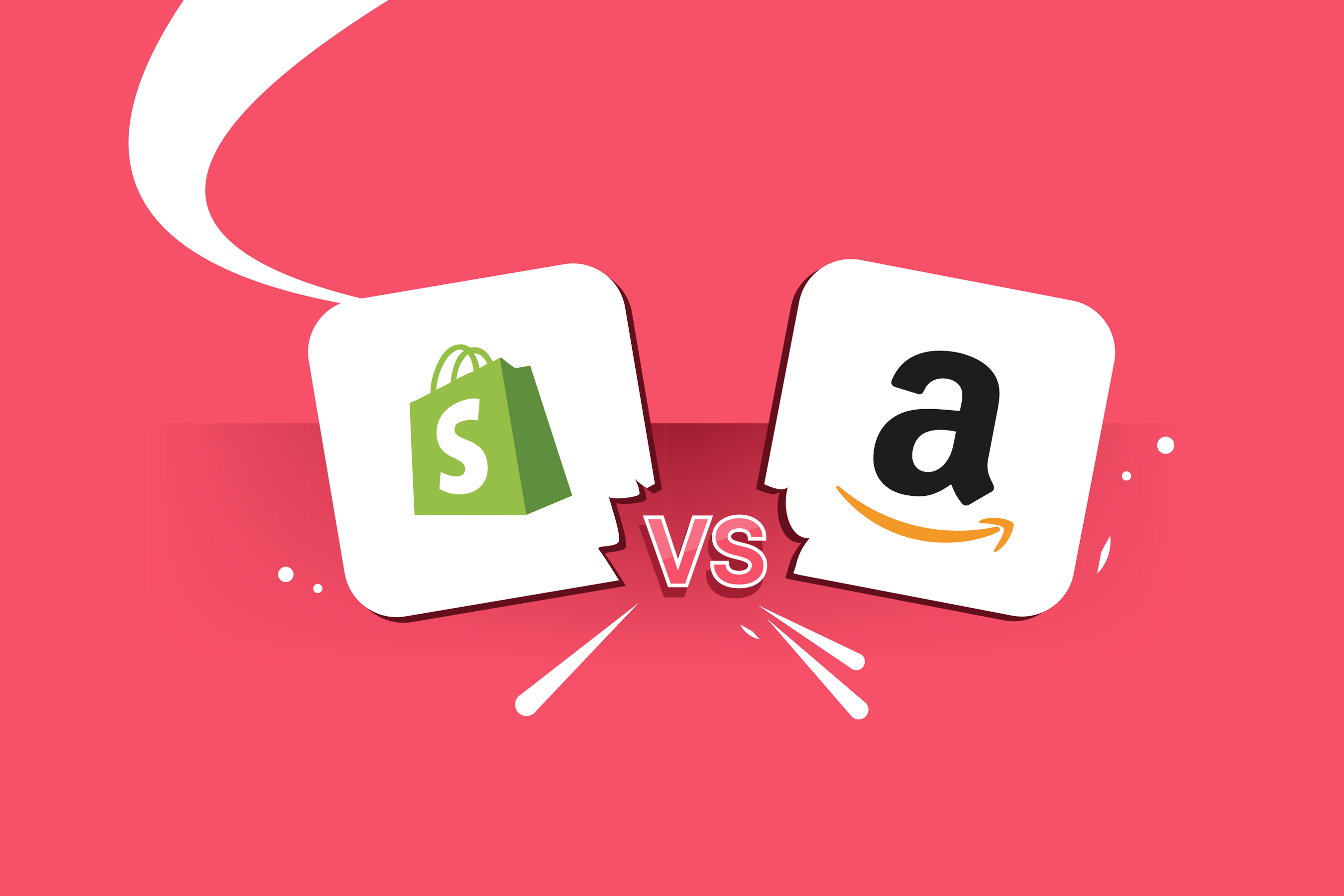Thinking of starting an online store but can’t decide between selling on Shopify vs Amazon? It’s a common dilemma for small business owners, artists, and print-on-demand (POD) sellers.
The reality is that both platforms offer great opportunities, but they serve different needs. Shopify lets you build your own branded store while Amazon connects you with millions of buyers.
So, which one can help your business grow in 2026?
The solution lies in understanding the benefits and limitations of Shopify vs Amazon.
This Shopify vs Amazon guide will break down each platform’s unique strengths, challenges, and costs. You’ll learn everything you need to choose.
Overview: Shopify vs Amazon at a Glance
Before you decide between selling on Shopify vs Amazon, it’s crucial to understand how they work. The main difference between Shopify and Amazon lies in their business models.
Shopify is a top ecommerce platform that lets you build a custom online store.
Amazon, by contrast, is a massive online marketplace that had 2.2 billion website visitors in February 2024.

Image via Statista
You list your products alongside millions of other sellers and wait for buyers to find and buy them.
Here’s a quick Shopify vs Amazon comparison.
Shopify grants you ownership and control, while Amazon gives you reach. The right choice depends on whether you want long-term brand growth or quick sales with less setup effort.
Also Read:
- How to Sell on Amazon Without Inventory (Step-by-Step)
- Amazon Statistics: Key Numbers You Should Know
Shopify vs Amazon: Pros and Cons
Both platforms have strengths and weaknesses. Understanding these helps you choose wisely.
Here are the advantages and disadvantages of Shopify vs Amazon.
Pros of Selling on Shopify
- Complete Brand Control: You design your store’s look, tone, and experience. From page design to layout, everything reflects your brand identity.
- Data Ownership: Every customer email, order, and insight belongs to you. You can use this data to create personalized marketing campaigns.
- Easy Integrations: Shopify connects seamlessly with POD platforms like Podbase. You can upload your designs and run an online store without inventory.
- Search Engine Optimization: With Shopify, you can optimize product pages, publish blog content, and build backlinks that improve your Google rankings.
Cons of Selling on Shopify
- You Must Drive Your Own Traffic: Unlike Amazon, no one will visit your store by default. You must attract them through ads, SEO, or social media marketing.
- Additional Costs: If you want to scale your small business, you’ll need to pay for extra features, apps, themes, and marketing tools.
- Fulfillment Responsibilities: Unless you have a dropshipping business or use a third-party fulfillment provider, you’ll handle packaging and shipping.
Pros of Selling on Amazon
- Built-In Traffic: Amazon already attracts millions of active buyers who trust the platform. Listing your products on this platform boosts their visibility.
- Easy Fulfillment: If you want hands-off operations, Fulfillment by Amazon (FBA) stores, packs, and ships your products on your behalf.
- Fast Setup: You can upload your listings within hours and start selling print-on-demand products on Amazon quickly.
Cons of Selling on Amazon
- Heavy Competition: You’ll compete with thousands of sellers offering similar items, including Amazon itself. To stand out, you may need to run sponsored ads.
- Limited Branding Control: Amazon controls the page layout, colors, and design. Even if you’re a brand owner, your listings look like everyone else’s.
- High Fees: The platform charges a referral fee of 8-45% on each sale, plus FBA fees for storage and shipping. These fees can reduce your profits.
- Suspension Risks: Violating Amazon’s strict policies (even accidentally) can result in sudden account suspension.
Also Read:
Shopify vs Amazon Fees: What It Really Costs
When comparing Shopify vs Amazon, understanding each platform’s costs is essential to making your first sale count. Where you choose to sell will determine your profit margins.
Let’s compare the Amazon store vs Shopify costs.
Shopify: Monthly Pricing + App Fees
Shopify runs on a simple subscription model. You pay a fixed monthly fee depending on your plan.

- Basic: $27 per month
- Grow: $72 per month
- Advanced: $399 per month
- Plus: $2,300 per month
If you want to add extra tools, like email marketing or advanced analytics, you’ll need to pay for apps. Many apps range from $5 to $100+ per month, depending on your needs.
Amazon: Referral, Fulfillment, and Subscription Fees
Amazon’s pricing works differently. Instead of a set monthly fee, you pay based on your sales and how you fulfill orders.
- Selling plan fees:

- Professional plan: $39.99 per month
- Referral fees: These usually range from 8% to 45%, depending on the product category.

- FBA fees: Costs vary by product size and weight.

Let’s say you’re selling a $50 water bottle on both platforms. Below is an example comparison showing what your profit might look like after fees.
Shopify’s fees are fixed and predictable, helping you plan for growth. Amazon’s fees fluctuate with sales, which can cut into your profits.
Shopify vs Amazon SEO: Which One Wins in Organic Reach?
If you want to market your products online without paying for ads, search engine optimization (SEO) is your best bet. So, how is Shopify different from Amazon when it comes to organic reach?
Let’s compare Shopify vs Amazon SEO.
Shopify SEO
Shopify gives you the tools to build your own print-on-demand store from the ground up. You have total control over your website, content, and strategy.
Here’s what makes Shopify SEO effective:
- You can edit every page’s title and meta description to match your target keywords. This helps your site rank better on Google and attract more shoppers.
- Shopify lets you create blog posts, landing pages, and guides. This content builds trust and brings in organic traffic over time.
- Since you own your website, you can earn backlinks from reputable websites. These links build your site’s credibility and boost your search rankings.
Amazon SEO
Amazon plays by its own rules. Instead of Google SEO, it uses an internal search algorithm called A9. It determines which products appear first when someone searches on Amazon.
Here’s how Amazon SEO works differently:
- Amazon rewards listings that convert well. The more a product sells and gets good reviews, the higher it ranks.
- Product titles, bullet points, and descriptions still matter. But the focus is on keywords that drive purchases, not just traffic.
Insight: Some business owners on Reddit shared that after switching to Shopify, they began spending more on SEO. The platform gives them more control over their online visibility. It also enables them to drive long-term, organic traffic.
Also Read:
Shopify vs Amazon for Print-on-Demand Businesses
If you’re starting a print-on-demand business, choosing between Shopify vs Amazon is a big decision. Both allow you to sell custom products and carve a profitable POD niche.
However, these platforms offer very different experiences. Let’s look at how Shopify vs Amazon compare in this aspect.
Shopify
Is Shopify better than Amazon for print-on-demand businesses? It’s perfect if you want to build your own brand. It connects directly with the best POD companies, such as Podbase, Printful, and Printify.
With Shopify, you can easily start an ecommerce business. A platform like Podbase handles everything from printing to shipping. You only need to create, market, and sell custom POD products, such as:
- Custom t-shirts and hoodies
- Personalized phone cases and tech accessories
- Art prints, wall décor, and home accessories
- Drinkware
Amazon
Amazon offers Merch by Amazon (MBA), which makes it easy to upload POD designs and start selling right away. Amazon handles printing, shipping, and customer service.
The downside?
You get limited creative control over pricing, branding, and product selection. While you can sell on Amazon without inventory, it works best for simple POD products like:
- T-shirts and apparel
- Tote bags
- Branded merchandise
Can You Use Shopify and Amazon Together?
When it comes to Shopify vs Amazon, you don’t always have to pick one. Many sellers use both platforms to reach more customers and scale their ecommerce sales. It’s called a hybrid model, and it offers the best of each platform.
With this model, you can build your print-on-demand brand on Shopify. You can then use Amazon FBA to handle storage, packing, and shipping. This setup gives you full control of your brand while saving time on logistics.
People on Reddit have shared how they use Amazon’s fulfillment network to ship Shopify orders quickly and reliably.
One clever tip from the Reddit community is to choose “discreet packaging” for FBA orders. This way, your Shopify customers won’t see Amazon logos on their packages.
Instead, you can include discount QR codes on your packaging that lead customers directly to your Shopify store.
Which Platform Is Right for You?
Still trying to decide between Shopify vs Amazon? The right choice depends on your goals and how you want to run your business.
Here’s a quick way to figure it out.
- Choose Shopify if you want complete control over your store, strong branding, and steady long-term growth.
- Select Amazon if you need quick exposure, instant traffic, and an easy setup with less technical work.
- Use both if you want your own loyal audience on Shopify, plus Amazon’s massive reach.
Real Community Insights (From Reddit and Sellers)
Wondering what real sellers think about the Shopify vs Amazon debate? The Reddit community is full of insights from people who’ve tried both.
Here’s what they’re saying:
- “Almost 90% of what we sell at the company I work for through Shopify is fulfilled through Amazon.“
- “I decided to give Shopify a try and quickly realized how much more control I had over my brand's image and customer experience.“
- “Traffic on Amazon is a lot more qualified (lower in the funnel) than a Shopify store, so you’ll see higher ROAS and lower ACOS.“
Reddit Consensus: Use Amazon to make sales and Shopify to build your brand.
Also Read:
- Best Etsy Alternatives for Sellers (Free & Paid)
- How to Start a Shopify Store with Podbase: The Ultimate Guide for Success
Final Thoughts – Shopify vs Amazon in 2026
The Shopify vs Amazon debate isn’t about which one is better overall. It’s about the platform that aligns best with your goals.
Shopify gives you more control and the chance to build your own store from scratch. But you have to market your brand to drive traffic to your store.
Amazon, on the other hand, gives you access to millions of active shoppers. But it has higher fees and more competition.
So, choose based on your needs. If you want to sell products without any inventory, start a POD business with Podbase.





.png)
.png)


